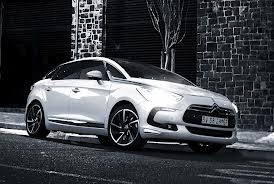


This edition of the BMW 5 Series 528i Saloon E39 is the 5 speed / Manual version and was first brought out in 1999. This was at around the same time as the introduction of the and the .This particular BMW 5 Series has a 2793cc Naturally Aspirated Petrol powerplant with 6 cylinders in a St formation.
The 5 Series shares its Petrol St6 engine configuration with the likes of the 1965 Aston-Martin DB6 1965 and the . If you're looking for other fast cars which share the 5 Series's Rear Wheel Drive, Saloon combination then how about the 1982 Fiat X1/9 1.5 8V or the 1965 Aston-Martin DB6 1965.
Weighing in at 1530 kgs (3373 lbs) this makes the BMW 5 Series 528i Saloon E39 in the same weight category as the 2022 Porsche 911 Carrera T 3.0 Turbo 992 or the give or take 50kg.
In terms of power the 2793cc 24V St6 engine produces 193 bhp (143 kW) @ 5500 rpm similar to the 2020 Abarth 695 70th Anniversario 1.4 Turbo (177 bhp) or the 2020 Audi A1 Sportback 40 TFSI S tronic S line (197 bhp).
The Naturally Aspirated St6 throws out 207 lb-ft (280.6 Nm) @ 3500 rpm placing it with cars of similar torque performance figures such as the 2020 Abarth 695 70th Anniversario 1.4 Turbo (184 lb-ft) or the 2020 Audi A1 A1 Sportback 35 TFSI S tronic S line (184 lb-ft).
If one combines the weight with power or torque performance for the BMW 5 Series you can get a better idea of it's real world performance.
![Land-Rover Velar 3.0 SDV6 300 - [2017] image Land-Rover Velar 3.0 SDV6 300 - [2017] image](/editionimages/2097.jpg)
The 2017 Land-Rover Velar 3.0 SDV6 300 (151.0 bhp per ton) has similar Bhp Per Ton stats as the BMW 5 Series.
The BMW 5 Series has a Power to weight ratio of 126.1 bhp per ton and 135.2 lb-ft per ton. Bhp Per Ton figures of the 1999 5 Series competing with the 2017 Land-Rover Velar 3.0 SDV6 300 (151.0 bhp per ton) or the 2009 Seat Ibiza Cupra 1.4 Turbo (151.0 bhp per ton).
If you agree with the late great Carroll Shelby then arguably an even better indicator of potential performance, Torque. Use weight as well and you end up with - Torque per ton, with the BMW 5 Series generating around 135.2 lb-ft per ton. If you're curious as to what other cars have as much torque to weight then look no further than the 2006 Infiniti G35 3.5 V6 X (160.1 lb-ft per ton) or the 1979 Dodge Magnum GT 5.9L V8 (160.0 lb-ft per ton).
With a 0-60mph time of 6.80 secs or a 0-100km/h (0-62mph) of 7.0 secs, this made the BMW 5 Series 528i Saloon E39 as fast as the 2017 Dodge Charger SXT AWD 3.7 V6 (6.80 secs) the 2015 Renault Megane Energy TCe 205 GT 1.6 Turbo (6.80 secs) the 2012 Mini Cooper John Cooper Works Countrman (6.80 secs) the or the 2010 Volkswagen-VW Scirocco 2.0 TSI DSG (6.80 secs). This BMW 5 Series 528i Saloon E39 is also faster than the 2015 Audi TT 1.8 TFSI Coupe (6.90 secs) the 2013 Land-Rover Range Rover Sport 3.0 V6 Supercharged (6.90 secs) the 2012 Ford Fiesta ST 1.6 Turbo (6.90 secs) the and the 2009 Renault Clio 2.0 RenaultSport III 200 Cup (6.90 secs).
When talking about the performance of the BMW 5 Series on the drag strip it can reach a quarter mile in an estimated 16.29 secs @ 84.0 mph. Similar performance down the quarter mile can be found with the the 2013 Porsche Panamera 3.6 V6 (16.22 secs), the 2002 Dodge Neon 2.4 SRT-4 (16.22 secs), and the 2002 Lotus Elise Sport 135 (16.23 secs).
Modern performance cars are often artificially restricted to 155mph. The 1999 version of the BMW 5 Series 528i Saloon E39 has a maximum speed of 142mph.
If maxing out your car on the AutoBahn is your thing and you're wondering what's faster than the 1999 BMW 5 Series 528i Saloon E39 then how about the 2014 Mini Cooper John Cooper Works 2.0 Turbo (153 mph), the 2004 BMW X5 4.8is V8 (153 mph), or the 2002 Volkswagen-VW Golf R32 (153 mph).










Aston-Martin 2/4 MK III Special
Engine: Naturally Aspirated Petrol | 2922cc 12v St6
Top Speed: 119 mph
0-60mph: 8.20 seconds

Aston-Martin Lagonda Series 1 5.3L V8
Engine: Naturally Aspirated Petrol | 5341cc 16v V8
Top Speed: 239.7 kph
0-100kph: 6.7 seconds



















